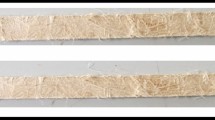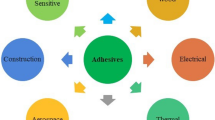Abstract
Thermal conductivity and thermal stability are the key requirements for friction materials. In this present work, three non-asbestos semi-metallic brake pads were developed using the same ingredients in the same proportion except by varying steel fibre by 30, 35, 41 wt%, synthetic barites contents by 11, 6, 0 wt% and designated as Na01, Na02, and Na03. The pads were tested for thermal stability and thermal conductivity. The various characterizations of the developed samples were done as per various industrial standards. The composites were tested for the fade and recovery characteristics using full-scale inertia brake dynamometer scheduled as per JASO C 406 standards. It was observed that composite Na03 proved to be the best with good thermal stability and thermal conductivity leading to low fade and high recovery characteristics. Scanning Electron Microscope and Atomic Force Microscopy helped to study the surface wear morphology of the developed samples.











Similar content being viewed by others
Abbreviations
- TGA:
-
Thermo gravimetric analysis
- TC:
-
Thermal conductivity
- JASO:
-
Japanese automotive standards organization
- ISO:
-
International organization for standardization
- LOI:
-
Loss of ignition
- SEM:
-
Scanning electron microscope
- AFM:
-
Atomic force microscopy
- IS:
-
Indian standards
- NA:
-
Non-asbestos
- ASTM:
-
American society for testing and materials
- JIS:
-
Japanese industrial standards
- MAX, MIN:
-
Maximum, minimum
- °C:
-
Temperature
- km/h, RPM:
-
Speed
- m/s2 :
-
Deceleration
- MPa, bar:
-
Pressure
- kg/cm2 :
-
Shear Strength
- kg ms2 :
-
Inertia
- g/cc:
-
Density
- mm:
-
Millimeter
- µm:
-
Micrometer/microns
- nm:
-
Nanometer
- N:
-
Load (Newton)
- wt%:
-
Weight percentage
- µ:
-
Coefficient of friction (no unit)
References
Chan D, Stachowiak GW (2004) Review of automotive brake friction materials. Proc Inst Mech Eng Part D J Automobile Eng 218:953–966
Milenković, Predrag D., Saa J. Jovanović, Aleksandra S. Janković, Milan D. Milovanović, Nenad D. Vitošević, Milan V. Djordjević, and Mile M. Raičević (2010),‘The Influence of Brake Pads Thermal Conductivity on Passenger Car Brake System Efficiency’, Thermal Science, 221–230
Jang, H.O.(2013), ‘Brake friction materials’, Encyclopedia of Tribology, Springer, 263, ISBN: 978-0-387-92896-8
Kumar Mukesh, Bijwe Jayashree (2010) NAO friction materials with various metal Powders: tribological evaluation on full-scale inertia dynamometer. Wear 269:826–837
Nicholson G (1995) Facts about Friction. Gedoran Publications, Virginia, Winchester
Lenin Singaravelu D, Chandra K, Misra PS (2011) New processing technology for manufacture of heavy duty metallo-ceramic brake pads. Powder Metall 54(2):118–126
Bijwe J (1997) Composites as friction materials: recent developments in non- asbestos fiber reinforced friction materials—a review. Polym Compos 18:378–396
Blau, PJ. (2000), ‘Compositions, functions, and testing of friction brake materials and their Additives’, ORTN/TM-2001/64
Vijay Subramanian, ‘Friction Material for Brakes’, US Patent No. US2011/0297496 A1, Publication Date: Dec 8, 2011
Jia X, Ling X (2004) Friction and wear characteristics of polymer–matrix friction materials reinforced by brass fibers. J Mater Eng Perform 1:642–646
Bijwe Jayashree, Kumar Mukesh (2007) Optimization of steel wool contents in non-asbestos organic friction composites for best combination of thermal conductivity and Tribo-performance. Wear 263:1243–1248
Sundarkrishnaa KL (2012) Friction material composites: materials perspective. Springer, Berlin
Thiyagarajan V, Kalaichelvan K, Srinivasan K, Venugopal S, Vijay R (2015) Influence of Specific Heat Capacity on Hybrid Non Asbestos Brake Pad Formulation. Journal of Balkan Tribological Association 21(1):102–119
Ibhadode AOA, Dagwa IM (2008) Development of asbestos-free friction lining material from palm kernel shell. J Brazil Soc Mech Sci Eng 30(2):166–173
Kumar Mukesh, Bijwe Jayashree (2011) Non asbestos organic (NAO) friction composites: role of copper; its shape and amount. Wear 270:269–280
Shojaei A, Fahimian M, Derakhshandeh B (2007) ‘Thermally conductive rubber- based composite friction materials for railroad brakes- Thermal conduction characteristics. Composite Sci Technol 67:2665–2674
Rhee SK (1974) Friction properties of a phenolic resin filled with iron and graphite Sensitivity to load, speed and temperature. Wear 28:277–281
Gopal P, Dharani LR, Blum FD (1995) ‘Load, speed and temperature sensitivities of a Carbon-fiber-reinforced phenolic friction material. Wear 181–183:913–921
Trezona, R. I., Allsopp, D.N., and Hutchings. I.M.(1999), ‘Transition between two-body and three-body abrasive wear: influence of test conditions in micro scale abrasive wear test’, Wear, 205–214
Kumar Mukesh, Bijwe Jayashree (2010) Role of Different metallic fillers in non-asbestos organic (NAO) friction composites for controlling sensitivity of coefficient of friction to load and speed. Tribol Int 43:965–974
Kasem H, Brunel JF, Dufrénoy P, Siroux M, Desmet B (2011) Thermal levels and sub surface damage induced by the occurrence of hot spots during high-energy braking. Wear 270:355–364
Choa MH, Cho KH, Kim SJ, Kim DH, Jang H (2005) The role of transfer layers on friction characteristics in the sliding interface between friction materials against gray iron brake disks. Tribol Lett 20:101–108
Lenin Singaravelu, D., Vijay, R., and Rahul, M., ‘Influence of Crab Shell on Tribological Characterization of Eco-Friendly Products Based Non Asbestos Brake Friction Materials,’ SAE Technical Paper 2015-01-2676, 2015, doi: 10.4271/2015-01-2676
Acknowledgments
We thank Centre for Nanotechnology, Sathyabama University, Chennai (Mr. K. Viswanathan, Scientist C, Mr. Arulmaximus Rabel, Scientist C and Mr. D. Ramachandran, Scientist C) for helping us in doing SEM and AFM studies.
Author information
Authors and Affiliations
Corresponding author
Additional information
Technical Editor: Alexandre Mendes Abrao.
Rights and permissions
About this article
Cite this article
Thiyagarajan, V., Kalaichelvan, K., Vijay, R. et al. Influence of thermal conductivity and thermal stability on the fade and recovery characteristics of non-asbestos semi-metallic disc brake pad. J Braz. Soc. Mech. Sci. Eng. 38, 1207–1219 (2016). https://doi.org/10.1007/s40430-015-0448-8
Received:
Accepted:
Published:
Issue Date:
DOI: https://doi.org/10.1007/s40430-015-0448-8




